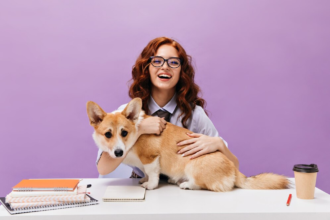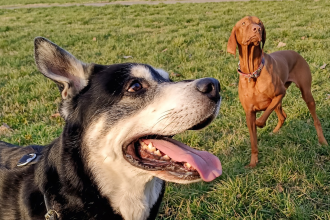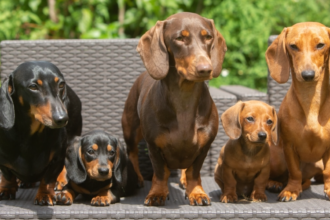Creating custom dog clothes patterns is a rewarding way to dress up your furry friend while ensuring a comfortable and personalized fit. Whether you’re a seasoned sewist or a beginner looking to start, making your own dog clothes allows you to choose the fabrics, styles, and designs that best suit your pet’s personality and comfort. In this guide, we’ll cover everything from the basics of dog clothing patterns to creating seasonal outfits and tips on tailoring patterns for different dog breeds and sizes. Let’s dive into the fun world of DIY dog fashion!
1. Why Make Dog Clothes at Home?
- Personalized Fit: Dogs come in all shapes and sizes, and not all store-bought clothes fit well. DIY patterns can be tailored to fit your dog’s unique measurements, ensuring maximum comfort.
- Cost-Effective: Making your own dog clothes can be more affordable than purchasing high-end pet wear, especially if you repurpose old fabrics or use remnants from other projects.
- Creative Freedom: From playful prints to stylish cuts, creating your own dog clothes lets you choose the look, material, and style that fits your dog’s personality.
- Environmental Impact: By using upcycled or recycled materials, you’re reducing waste and promoting a more sustainable approach to pet fashion.
2. Essential Tools and Materials for Dog Clothes Patterns
- Basic Sewing Tools: You’ll need scissors, pins, a measuring tape, fabric markers, needles, and thread.
- Sewing Machine (Optional): While some simple patterns can be hand-sewn, a sewing machine will make the process quicker and easier.
- Fabric: Choose soft, comfortable fabrics like cotton, fleece, or jersey. Avoid anything too stiff or heavy, as it could be uncomfortable for your dog.
- Patterns or Templates: Purchase or download dog clothes patterns, or create your own by tracing your dog’s measurements onto paper.
- Closures: Velcro, snaps, or buttons work well for securing dog clothing and are generally more comfortable for pets than zippers.
3. Taking Measurements for a Custom Fit
Accurate measurements are essential to creating well-fitting dog clothes. Here are some key measurements to take:
- Neck Circumference: Measure around your dog’s neck, leaving a little room for comfort.
- Chest (Girth): Measure the widest part of your dog’s chest, typically just behind the front legs.
- Body Length: Measure from the base of the neck (where a collar would sit) to the base of the tail. This length will determine the overall size of the garment.
- Leg Circumference and Length: If you’re making a pattern with sleeves, measure around the thickest part of each leg and the length from the shoulder to the wrist.
These measurements are your guide to ensuring the pattern fits well. Add a small allowance around the edges for seam allowance and ease, which will give your dog more room to move comfortably.
4. Types of Dog Clothes Patterns
- Basic T-Shirt: A simple, comfortable design that’s great for beginners. It’s a lightweight option that’s perfect for both warmth and style.
- Sweater or Hoodie: A fleece or knit sweater keeps your dog cozy during colder months. Add a hood for extra style points!
- Raincoat: Waterproof fabrics like nylon or vinyl can be sewn into a raincoat with a hood to keep your dog dry on rainy days.
- Pajamas or Onesie: Soft cotton or fleece PJs are ideal for bedtime and are especially useful for short-haired or small dogs who might get cold at night.
- Vest or Harness: A vest pattern can double as a lightweight harness, especially if you reinforce the fabric and add sturdy attachments.
- Seasonal Costumes: For holidays or events, you can design seasonal costumes like a pumpkin, Santa suit, or bunny onesie, adding playful touches to your dog’s wardrobe.
5. Creating Your Own Dog Clothes Pattern
- Step 1: Draw or Download a Template
You can find free dog clothing templates online or create your own by sketching an outline based on your dog’s measurements. Start with a basic shirt or vest pattern and add any customizations you like. - Step 2: Cut Out the Pattern Pieces
Lay your pattern over the fabric and pin it in place. Cut around the edges carefully, making sure to leave a seam allowance (usually about ¼ inch) around each piece. - Step 3: Sew the Pieces Together
Follow the pattern’s instructions to assemble the pieces. For a T-shirt, you’ll generally start by sewing the body panels, then add sleeves or leg openings. Ensure seams are smooth and secure. - Step 4: Add Closures and Details
Add any closures, such as Velcro or snaps, for easy on-and-off wear. If your design has embellishments, attach them now. Avoid small parts that could be a choking hazard.
6. Fabric Choices and Seasonality
- Lightweight Fabrics: Cotton, linen, or lightweight jersey are ideal for warmer weather as they’re breathable and won’t cause your dog to overheat.
- Fleece and Knit: Perfect for colder months, fleece and knit materials keep your dog warm and cozy. These fabrics also have some stretch, making them comfortable and easy to wear.
- Waterproof Materials: Nylon or vinyl is useful for raincoats or snow jackets. Look for lightweight waterproof fabrics, as heavy materials may restrict movement.
- Recycled Fabrics: Upcycling old clothes or blankets is a sustainable option. Old T-shirts, sweaters, and even scarves can be transformed into adorable dog clothes.
7. Common Challenges and Solutions in Dog Clothes Patterns
- Getting the Right Fit: If the garment is too tight or loose, adjust the pattern and remember to leave enough seam allowance. Test the fit on your dog and make adjustments as needed.
- Avoiding Irritation: Avoid scratchy or bulky seams, especially around sensitive areas like the neck and underarms. Use soft materials or add a lining for added comfort.
- Pattern Adjustments for Breed Differences: Dog breeds have unique body shapes, so it may take a few tries to tailor the pattern to fit your dog perfectly. For example, Dachshunds need longer body panels, while Bulldogs need more space around the chest.
8. Where to Find Dog Clothes Patterns
- Craft Stores: Many craft stores carry commercial dog clothing patterns for various styles, ranging from basic shirts to seasonal costumes.
- Online Resources: Websites like Pinterest, Etsy, and sewing blogs offer both free and paid dog clothing patterns. Some sites also provide video tutorials for step-by-step guidance.
- Pattern Books: Look for dog sewing books that include multiple patterns and instructions. Books often cover basic sewing techniques, making them ideal for beginners.
9. Styling Ideas and Inspiration
- Personalized Patterns: Add initials, patches, or iron-on designs to make your dog’s clothes one-of-a-kind.
- Color Coordination: Matching your outfit with your dog’s can be a fun way to make a statement. Look for complementary colors or similar styles for a coordinated look.
- Themed Outfits: Design outfits for special occasions or holidays, such as patriotic colors for Independence Day or plaid patterns for a winter theme.
- Minimalist Designs: Opt for a simple, classic look with neutral colors, plain fabrics, and minimal embellishments for a timeless style that works year-round.
10. Taking Care of DIY Dog Clothes
- Washing Tips: Use gentle, pet-safe detergents to wash your dog’s clothes. Most fabrics are best washed by hand or on a gentle cycle to prevent shrinkage or wear.
- Storage: Keep your dog’s clothing items in a clean, dry place to prevent damage or fading.
- Repairing Wear and Tear: Patch up any holes, loose seams, or worn-out closures. Having some basic sewing knowledge means you can easily maintain your dog’s wardrobe.
Conclusion
Creating dog clothes patterns is an enjoyable, practical, and cost-effective way to keep your pet looking fashionable while ensuring a comfortable, custom fit. With a few basic tools, some fabric, and a bit of creativity, you can craft a wardrobe for your dog that’s as unique as they are. Plus, making dog clothes at home gives you the freedom to experiment with styles, designs, and fabrics, creating outfits on dhgate that not only look great but also meet your dog’s needs for comfort and movement. Whether you’re crafting a cozy winter sweater or a breezy summer T-shirt, you’ll find that DIY dog clothes can become a rewarding hobby for you and a comfortable addition to your pet’s life.














